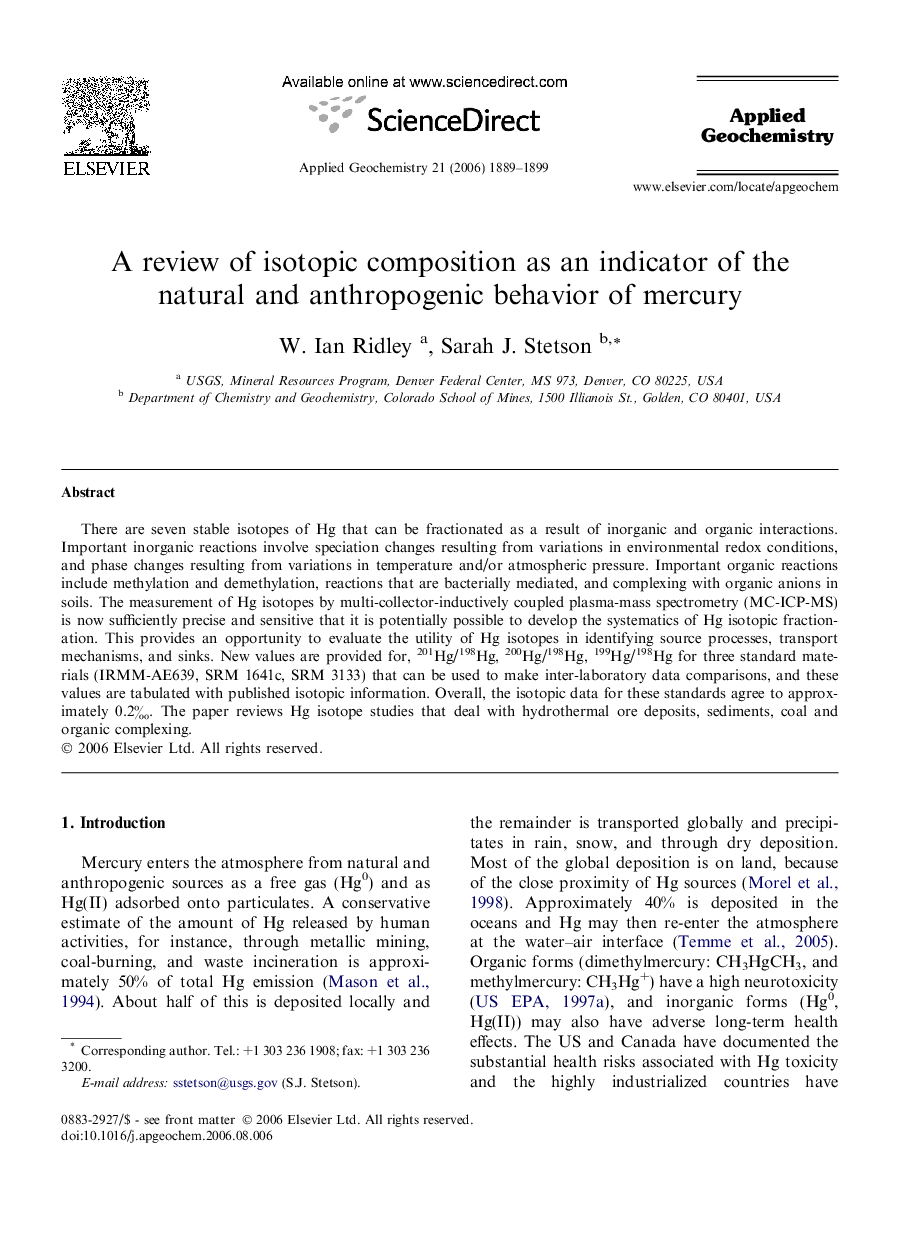| Article ID | Journal | Published Year | Pages | File Type |
|---|---|---|---|---|
| 4436908 | Applied Geochemistry | 2006 | 11 Pages |
There are seven stable isotopes of Hg that can be fractionated as a result of inorganic and organic interactions. Important inorganic reactions involve speciation changes resulting from variations in environmental redox conditions, and phase changes resulting from variations in temperature and/or atmospheric pressure. Important organic reactions include methylation and demethylation, reactions that are bacterially mediated, and complexing with organic anions in soils. The measurement of Hg isotopes by multi-collector-inductively coupled plasma-mass spectrometry (MC-ICP-MS) is now sufficiently precise and sensitive that it is potentially possible to develop the systematics of Hg isotopic fractionation. This provides an opportunity to evaluate the utility of Hg isotopes in identifying source processes, transport mechanisms, and sinks. New values are provided for, 201Hg/198Hg, 200Hg/198Hg, 199Hg/198Hg for three standard materials (IRMM-AE639, SRM 1641c, SRM 3133) that can be used to make inter-laboratory data comparisons, and these values are tabulated with published isotopic information. Overall, the isotopic data for these standards agree to approximately 0.2‰. The paper reviews Hg isotope studies that deal with hydrothermal ore deposits, sediments, coal and organic complexing.
